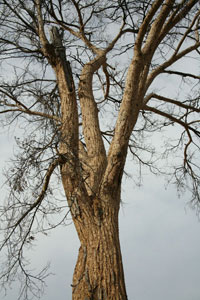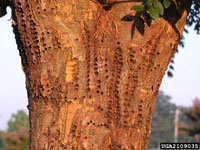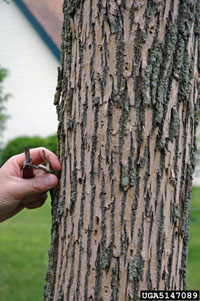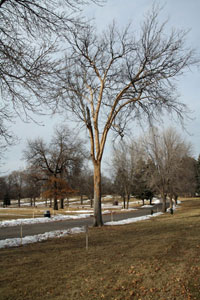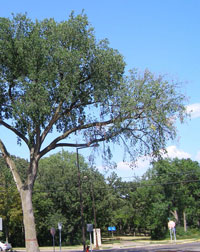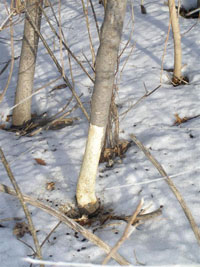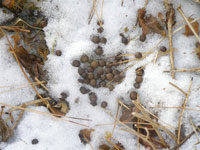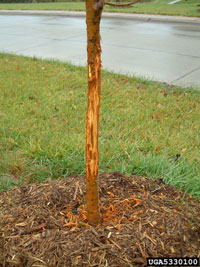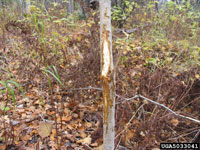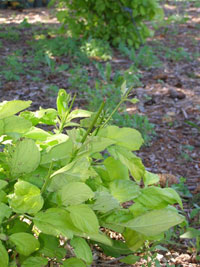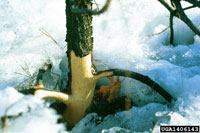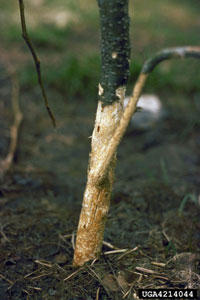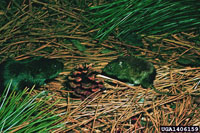Extension > Garden > Diagnose a problem > What's wrong with my plant? > Deciduous Trees > Elm > Bark chewed or removed
Elm > Trunk/Branches > Bark chewed or removed
1 of 5
Woodpeckers
- Bark often removed around holes
- Holes are round and range in size from 1/4 to 1/2 inch
- Larger holes, 1 1/2 or more inches may be nesting holes and suggest softer heartwood inside the tree
- Woodpecker probing may indicate presence of wood boring insects under bark
- Repetitive tapping or drumming heard
- Birds of varying black and white patterns, often with some red, seen tapping on trees
- More information on Woodpeckers
2 of 5
Dutch elm disease
Ophiostoma ulmi and Ophiostoma novo-ulmi
- Woodpecker holes with bark loss is common on trees killed by Dutch Elm Disease
- Peel back bark on symptomatic branch to reveal brown streaking on wood
- Leaves turn yellow, wilt or shrivel, turn brown, then fall off the branch
- Initial infection occurs on one branch; disease may quickly progress to all branches
- Healthy elms neighboring infected elms soon show symptoms due to spread through root grafts
- American, red or slippery and rock elm are highly susceptible
- More information on Dutch elm disease
3 of 5
Rabbit feeding
- Bark is completely removed from the main trunk
- Regular scraping the size of a spoon tip can be seen in the wood
- Small twigs are cleanly cut off with a sharp edge, at a 45 degree angle
- Damage can occur from ground level to several feet up the trunk depending on the depth of winter snow
- Majority of damage occurs in winter and early spring
4 of 5
Deer rubbing on young trees
- Long lines of shredded or peeled off bark along main trunk up to 3 feet off the ground from antler rubbing
- Wood may appear shiny or "polished"
- Leaves and small branches (less than 1" in diameter) cut off with a rough or ragged edge — not a clean cut!
- Feeding occurs from the ground up to 6 feet or slightly higher. Ragged edges, same as above, also if the bark is removed by a deer there will be no sign of teeth marks
- More information on deer injury
5 of 5
Vole feeding
- Bark is completely removed from the main trunk in irregular patches
- Scraping the size of a fork tine can be seen in exposed wood
- Damage occurs during winter from the ground level up to winter snow depth



